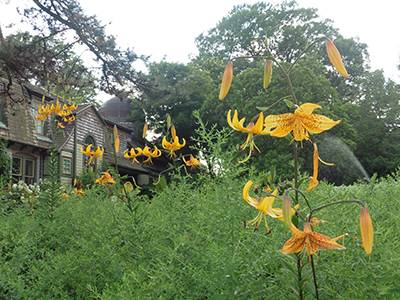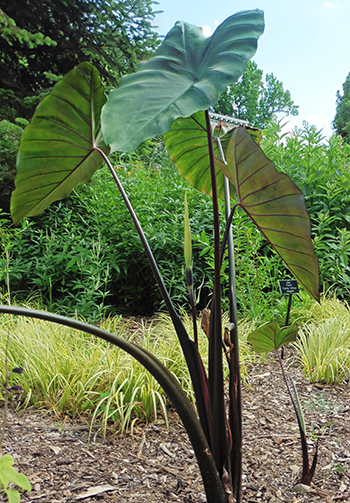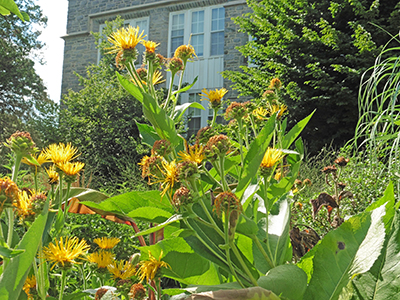
Plants of the Week: August 6

2018 Summer Intern
Lilium leichtlinii
Lilium leichtlinii, commonly known as Leichtlin’s lily, was named after Maximilian Leichtlin, a German botanist who lived during the mid to late 19th century. The plant’s golden-yellow, highly reflexed flowers measure 2 inches across, and are easily visible as you pull into the parking lot at the Scott Arboretum.
This Japanese native is not particularly fragrant but its ornamental value is compensatory. With mature bulbs producing upwards of 20 blossoms on a single stem, it is rather remarkable that these graceful lilies are able to remain upright. The stems are long and slender, usually reaching 3 to 4 feet in height, and are covered in thin lanceolate leaves. L. leichtlinii prefers sandy or loamy soils, but will generally tolerate any well-drained area that receives full sun to part shade.
It is hardy in USDA zones 4 through 8 and blooms in late July through early August. While mostly grown for its eye-catching display, the bulb of L. leichtlinii is edible when cooked and can be used similarly to potatoes. Photo Credit: L. Erskine

Colocasia esculenta ‘Fontanesii’
Colocasia esculenta ‘Fontanesii’ is a large tropical species often used in container gardening. Also known as black taro, this attractive plant has dark-green, waxy, heart-shaped leaves up to 30 inches long and dark purple to black veins. The 4-8 foot tall stems are also dark-purple to black and add a unique look to the garden.
Black taro thrives in full sun to partial shade and prefers very moist environments; it can even be planted in water up to 1 foot deep. This water-loving plant is a common choice for bogs, aquatic gardens, and other planted water features. In USDA Zone 6, C. esculenta is best overwintered by digging out the tubers, covering them with a layer of damp peat moss and storing them in a cool protected area such as a basement or shed. While grown mostly for its stems and foliage, this taro also produces inflorescences typical of the Araceae family, with spadices and bright yellow spathes. Photo Credit: L. Erskine

Inula magnifica ‘Sonnenstrahl’
Inula magnifica ‘Sonnenstrahl’, a hardy low-maintenance perennial in the John W. Nason Garden, is known by a variety of names including giant fleabane, giant inula, and showy elecampane. It is a member of the family Asteraceae in the genus Inula, which contains approximately 90 different species and is aptly nicknamed the “yellowhead” genus. This particular Inula species is a selection from Ernst Pagels, who selected it for its particularly long ray florets and rigorous growth. This perennial, hardy up to USDA Zone 5, typically reaches 6 feet in height and blooms from July to August with attractive clusters of delicate yellow flowers. Photo Credit: L. Erskine





No Comments